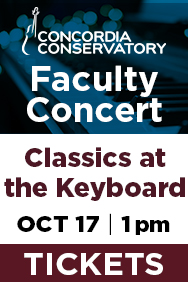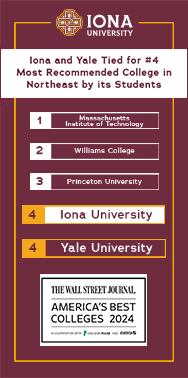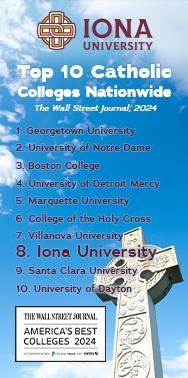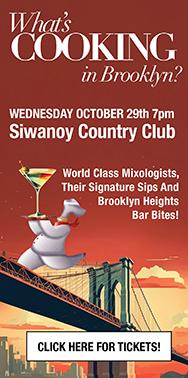Richard Magat, Man in Manhattan: The Universe of Giving

By Richard Magat
Jul. 29, 2015: Some twenty years ago, a friend invited me to a new fundraising event she was sponsoring called Poetry Walk. It invited people to donate a modest gift--$10, if I recall--and enjoy poetry readings, beginning in City Hall Plaza and at various intervals along the bridge to Brooklyn, at the end of which Walt Whitman's "Crossing Brooklyn Ferry" was recited--a beautiful but painfully long work exacerbated by a mushy oration by an official from the office of Brooklyn's borough president. Capping that off was a tasty dinner under a tent.
The proceeds financed a national poetry library and literary center on the banks of the Hudson River in lower Manhattan. Today, the basic format is unchanged, but the tariff has--$250 for the basic admission and $5,000 for a seat at a table with guest poets.
Poetry Walk is a tiny fraction of the philanthropic activities that abound in Manhattan, and that is a fraction of the $358 billion that Americans donated last year. Anyone with a mailbox will have clues to the innumerable causes that call on us.
The industry is peopled by volunteers and professional fundraisers. Profit-making enterprises use philanthropy to polish their images. The motives are honorable but now and then interests clash. Some years ago, for example, the head of United Way was indicted and jailed for stealing millions from that organization. Free of any blemish is the Gates Foundation, which has saved the lives of 33 million children from disease, and its predecessors Rockefeller and Ford.
On almost any day, Manhattan is a fundraising bazaar. Raising money for good causes is just part of the agenda. The rest is fashion, catering, and sociable and commercial contacts. A small sampling suggests the alphabet soup of causes--the New York City Ballet, the Robin Hood Foundation, the Russian Nobility Association, Women in Need, the Anti-Defamation League, the Wildlife Conservation Society, and hundreds more.
But generosity does not end at the gates of the metropolis. Consider Bronxville, itself, whose citizens support such causes as The Bronxville School Foundation, Lawrence Hospital, Jansen Hospice and Palliative Care, and The Bronxville Historical Conservancy. The catchall Community Fund continues to grow--$563,700 for 2016, including help to new agencies such as Cabrini of Westchester, the Tuckahoe Trolley, and the Wartburg home.
Having cited the Poetry Walk as emblematic of philanthropy in Manhattan, I believe it is only fair to note that the first president of the Poetry Foundation was Bronxville's own John Barr.
Government & History Directory
Bronxville is a quaint village (one square mile) located just 16 miles north of midtown Manhattan (roughly 30 minutes on the train) and has a population of approximately 6,500. It is known as a premier community with an excellent public school (K-12) and easy access to Manhattan. Bronxville offers many amenities including an attractive business district, a hospital (Lawrence Hospital), public paddle and tennis courts, fine dining at local restaurants, two private country clubs and a community library.
While the earliest settlers of Bronxville date back to the first half of the 18th century, the history of the modern suburb of Bronxville began in 1890 when William Van Duzer Lawrence purchased a farm and commissioned the architect, William A. Bates, to design a planned community of houses for well-known artists and professionals that became a thriving art colony. This community, now called Lawrence Park, is listed on the National register of Historic Places and many of the homes still have artists’ studios. A neighborhood association within Lawrence Park called “The Hilltop Association” keeps this heritage alive with art shows and other events for neighbors.
Bronxville offers many charming neighborhoods as well as a variety of living options for residents including single family homes, town houses, cooperatives and condominiums. One of the chief benefits of living in “the village” is that your children can attend the Bronxville School.
The Bronxville postal zone (10708, known as “Bronxville PO”) includes the village of Bronxville as well as the Chester Heights section of Eastchester, parts of Tuckahoe and the Lawrence Park West, Cedar Knolls, Armour Villa and Longvale sections of Yonkers. Many of these areas have their own distinct character. For instance, the Armour Villa section has many historic homes and even has its own newsletter called “The Villa Voice” which reports on neighborhood news.
Link to Village of Bronxville One Square Mile Monthly Newsletter
Village of Bronxville Administrative Offices
337-6500
Open 9:00am - 4pm excluding holidays and weekends
Bronxville Police Department
337-0500
Open 24 hours
Bronxville Parking Violations
337-2024
Open 9:00am - 4pm excluding holidays and weekends
Bronxville Fire Deparment
793-6400


















